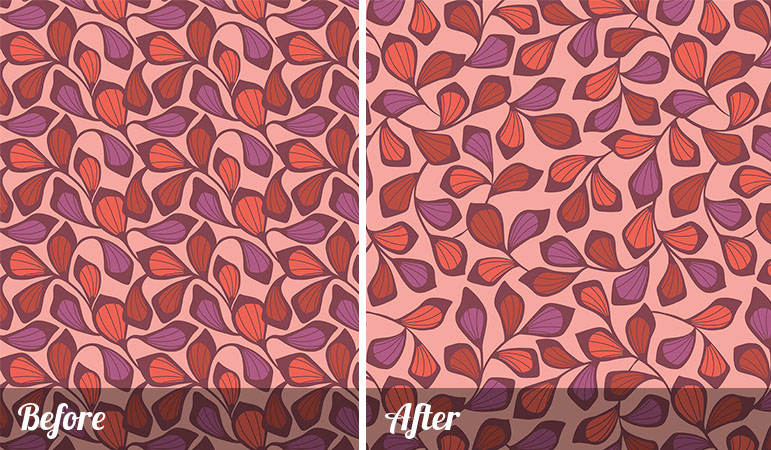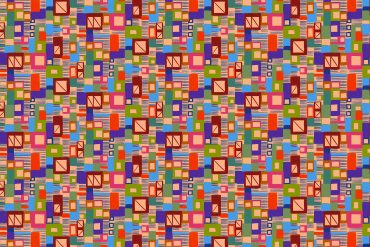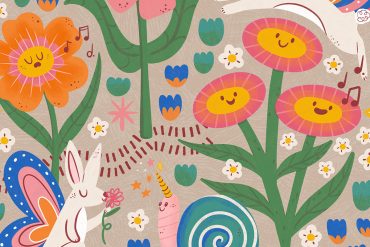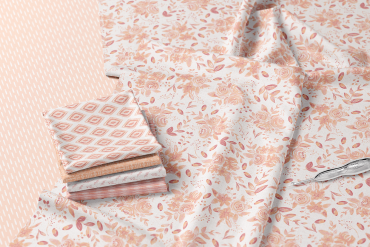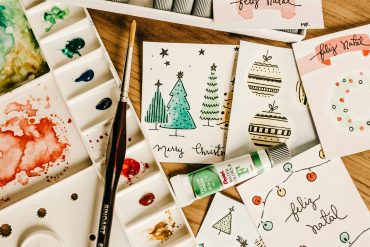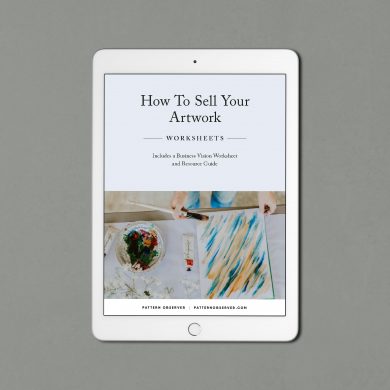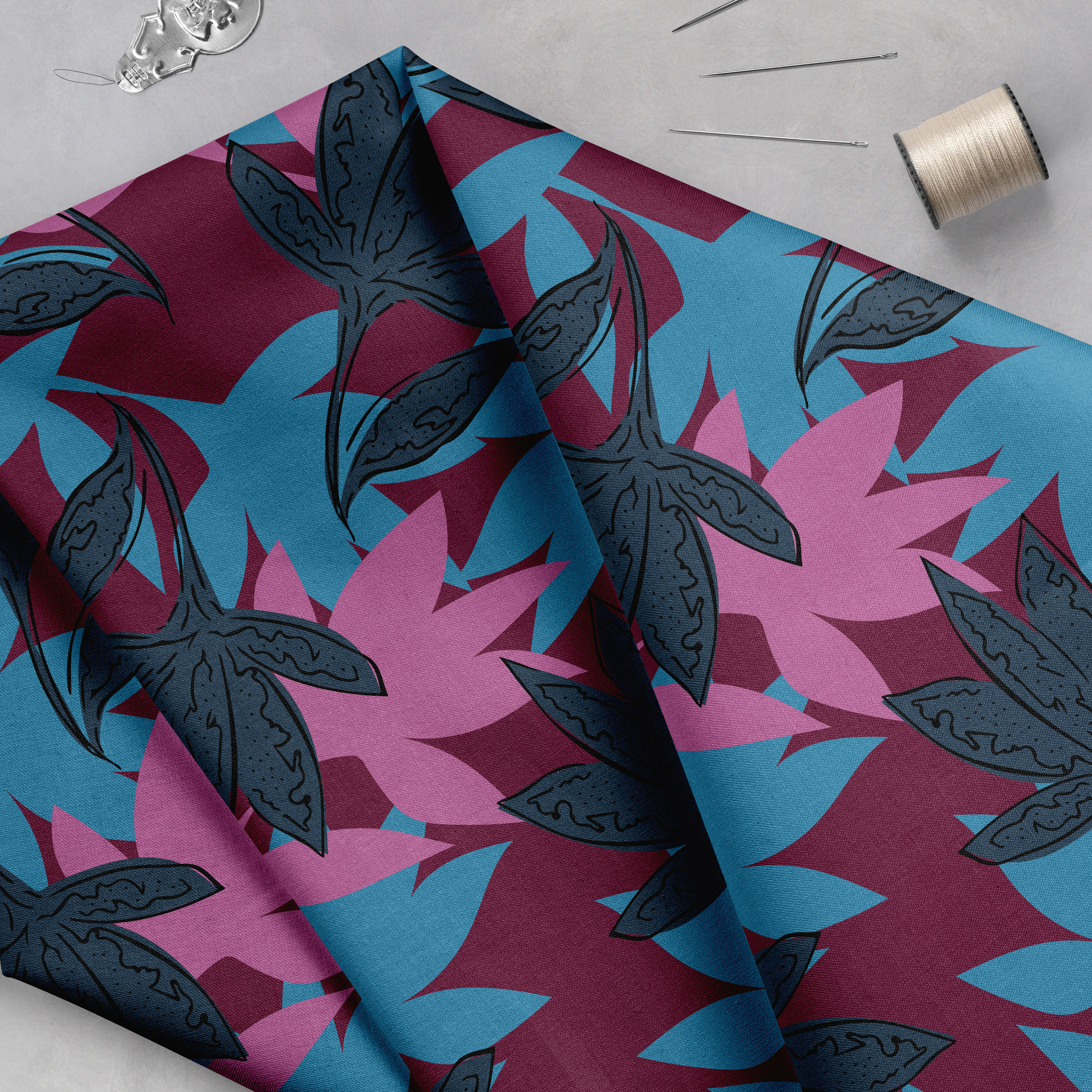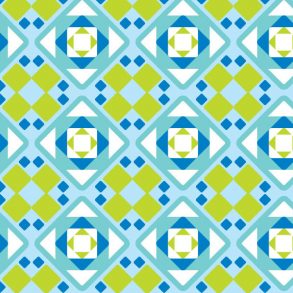Today I want to discuss one of the simplest ways to begin creating (and sharing!) stunning patterns. When designers first enter the pattern design world, they typically illustrate several elements and arrange them in a small layout, such as a four inch square. They then duplicate this layout to fill the page. This is a natural and logical way of working, and is fine for many patterns, such as small scale florals or dots. However, when working with midsize to large motifs, developing larger pattern layouts is a wonderful way to easily improve the quality of your artwork. Let’s look at this example:
The smaller pattern repeat on the left is fine, and depending on the market it may be acceptable, but fine and acceptable are not what we are aspiring towards. The larger repeat on the right took a little longer to develop, but is more impactful and appealing to the eye. Don’t you agree?
Spending more time on your pattern layouts will allow you to charge a premium, bring more visibility to your business, and you will begin to feel confident in your work. When you feel confident in your work, you will share and market your work with ease.
The next time you develop a pattern, try investing an extra hour into drawing additional motifs or transforming existing objects into a larger area of artwork. This can be done by copying the motifs and then flipping, rotating or adjusting their size. You will find the time to be well spent and a wonderful investment in your business. This concept may seem so simple, but sometimes the smallest changes to our creative process can have the most impact.


